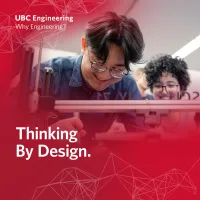“Manufacturing engineers have a great understanding of the physical world and the science that drives the art of making things,” says Dr. Adam Clare

- Program:
Are you interested in making things? In drawing on your innovation and creativity, as well as your technical, leadership and business skills, to make products safely, cost-effectively and sustainably?
If so, manufacturing engineering could be a great choice for you.
Manufacturing engineering is a field of engineering that brings together technology and materials to make the products we rely on every day, from bikes and buses to electronics, clothing and pharmaceuticals. It’s a field that offers an incredible variety of career paths both here in Canada and around the world.
What can I do with a degree in manufacturing engineering?
Manufacturing engineers generally work for companies that make products. These companies are from virtually every industry, including automobile and aerospace, electronics, clean energy, biomedical, food and beverage, and more.
Manufacturing engineers can also work for government or regulatory agencies to ensure manufacturing practices are safe. This kind of work could include developing policy or ensuring companies are meeting regulatory standards.

Depending on the size of the company, manufacturing engineers might find themselves overseeing much of the entire manufacturing process or focusing on one particular aspect.
“Broadly speaking, manufacturing engineers often work in two principal areas,” says Dr. Clare. “There’s the technology specialist who has a really good understanding of processes and is able to add value to the product being made. And then you have those involved on the leadership or production management side, who make sure the raw material is ready, that the team is trained, that the product meets quality requirements, and that all regulatory requirements are being met.”
What’s it like to study manufacturing engineering at UBC?
As you might expect from a program that lies at the intersection of many different areas, students take a wide range of courses covering topics in materials, mechanical and electrical engineering. The early years of the program set you up to understand the manufacturing world as a whole. In upper years, you can choose technical electives to gain expertise in specific areas.

Some common specialization streams include biomanufacturing, data-driven manufacturing, machine design, and sustainability in manufacturing.
“There’s a real hands-on focus in this program and we spend a lot of time in labs and working in groups on design projects,” says Dr. Keulen.
“And our cohort size is at a sweet spot in terms of size, where we are small enough to be a very collegial and collaborative community yet large enough to offer interesting technical electives and specialization options.”
Interested?
Learn more about manufacturing engineering:
- Check out our website
- Explore what it’s like to be a manufacturing engineering student
- Watch a video on project-based learning in manufacturing
- Discover more about career opportunities
Read profiles of current manufacturing engineering students and alumni by filtering your search for “manufacturing engineering.”



















